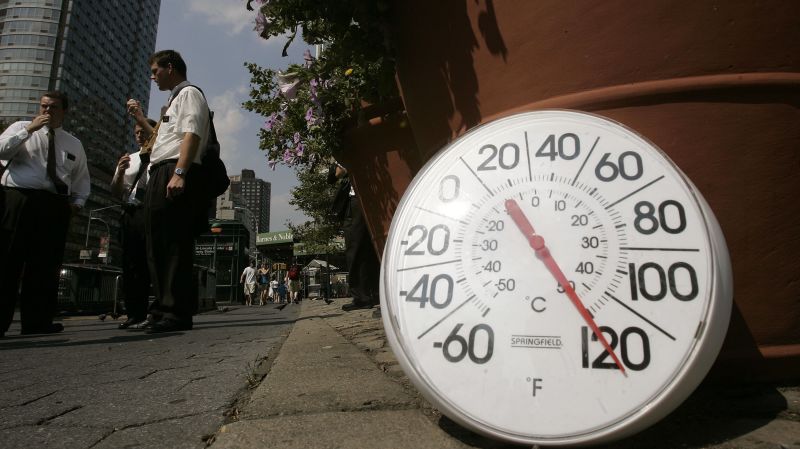
When your grandchildren plan a trip to Denver later this century, they’ll need to leave the winter hat at home and instead plan like they’re going to the Texas Panhandle.
That’s according to a new study published on Tuesday in Nature Communications, which looked at the future climate of 540 cities in North America and drew comparisons with cities of today. The results show that cities’ climates will, at the end of the century, look more like cities 528 miles south do today if emissions continue rising in line with current trends. That will rearrange more than vacation plans as city residents will be forced to cope with more intense heat and the dangerous impacts that came with it. The study also shows that if we begin to cut emissions, cities’ climates will still change but the shift will be far less dramatic.
Heat is something visceral and that’s partly why the scientists undertook the study. Matthew Fitzpatrick, a scientist at the University of Maryland Center for Environmental Science who led the study, told Earther that despite working with climate data on a regular basis, he really wanted to understand what rising temperatures would mean for him. He started his analysis looking to answer the question of what Washington, D.C.’s future climate would look like and then expanded the analysis to 539 other cities.
To undertake the analysis, he and his co-author used two climate model simulations: One where emissions continue to grow on their current trends and another where humanity reins emissions in starting in midcentury. They then took the temperature of the 540 cities under those two scenarios and compared them to city climates of today, finding a best fit.
The results show a massive southward migration of hundreds of miles for nearly all cities’ climates under both emissions scenarios, but particularly if emissions keep going up. The biggest moves distance-wise are in the eastern U.S. and along the Pacific Coast because there’s less topographic variety. While western cities’ climate analogs can sometimes just be found downslope where things are warmer, eastern and coastal cities’ analogs are often much further away. That’s how you end up with Washington, D.C. feeling like it’s in Mississippi, San Francisco feeling like Los Angeles and Los Angeles feeling like the tip of Baja California by century’s end if emissions continue. Or take Anchorage, which will feel like Powell River, British Columbia located more than 1,200 miles south.
The study also warns that some cities could end up with a climate with no analog if emissions keep rising.
“I like winter sports, so seeing that winter/snow would largely disappear as a major component of winter where I live was depressing,” Fitzpatrick said.
If carbon pollution begins to dip around 2040, the impacts will be far less dramatic. Cities’ climates will only migrate an average of 320 miles. Still dramatic to be sure—Washington, D.C. would still feel like Arkansas today—but the changes would require less extensive efforts to adapt. Climate Central conducted a similar analysis and created an interactive for the U.S. a few years ago (full disclosure: I helped with some of it), but only based it on a high end emissions scenario also used in the new study. Fitzpatrick said he started work on this study in 2010 and that the methods differ a bit, particularly in terms of showing what happens if emissions are cut. That offers a new way of looking at the problem and the choices we face.
This post has been updated to reflect Matthew Fitzpatrick is affiliated with the University of Maryland Center for Environmental Science.
by Brian Kahn from https://earther.gizmodo.com/by-the-end-of-the-century-san-franciscos-climate-could-1832559738?utm_source=earther_newsletter&utm_medium=email&utm_campaign=2019-02-13
